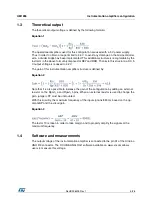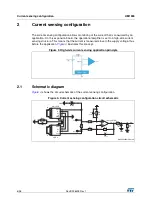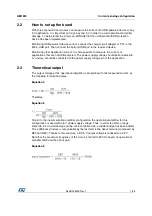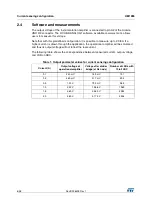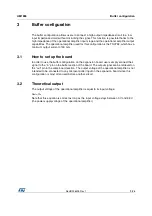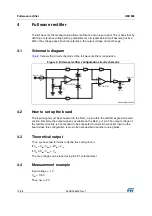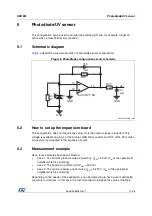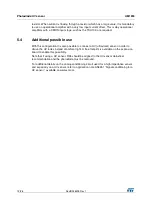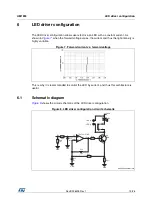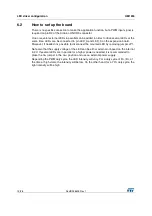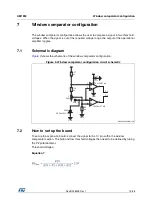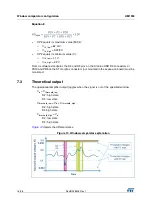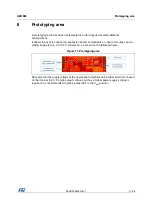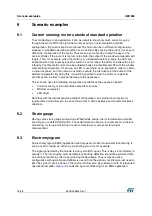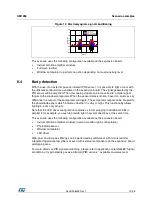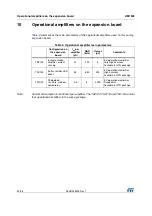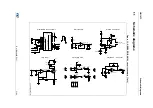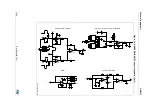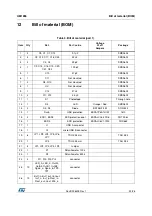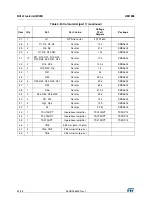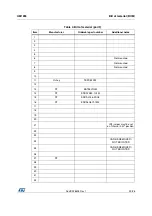
DocID028405 Rev 1
19/28
UM1955
Scenario examples
28
Figure 12. Electromyogram signal conditioning
This scenario uses the following configuration available on the expansion board:
•
Instrumentation amplifier structure
•
Full wave rectifier
•
Window comparator to perform an action depending on muscle activity level
9.4 Body
detection
With the use of an external passive infrared (PIR) sensor, it is possible to light a room with
the different configurations available on the expansion board. The signal generated by the
PIR sensor will be amplified. Then this analog signal can be converted to a digital signal
thanks to the window comparator. When the sensor detects motion, based on an emissivity
difference the output of the comparator will toggle. The comparator output can be coupled to
the photodiode sensor which indicates whether it is day or night. This functionality allows
lighting a room only at night.
Note that the LED driver configuration contains a slot for plugging in additional LEDs in
parallel if. for example, you wish to provide light in several directions at the same time.
This scenario uses the following configuration available on the expansion board:
•
Instrumentation amplifier structure (used in standard gain configuration)
•
Photodiode sensor
•
Window comparator
•
LED driver
High-pass and low-pass filtering can be performed by software or with microcontroller-
integrated operational amplifiers or even with external components on the expansion board
prototyping area.
For more details on PIR signal conditioning, please refer to application note AN4368 “Signal
conditioning for pyroelectric passive infrared (PIR) sensors”, available on www.st.com
0
1
2
3
4
5
0.0
0.3
0.5
0.8
1.0
1.3
1.5
1.8
2.0
0.0
0.5
1.0
1.5
2.0
After amplification
After rectifier
After filter with gain
Vo
lt
a
g
e
s
(
V)
Time (s)

